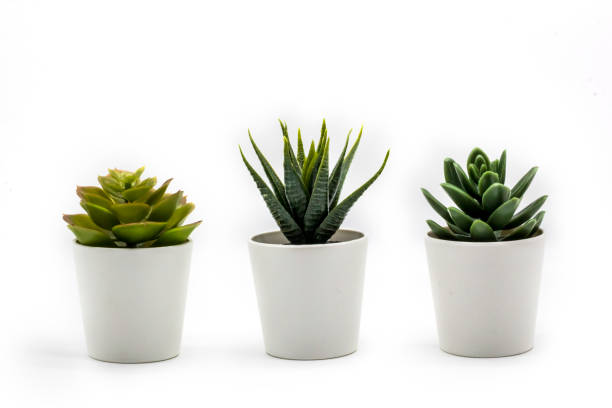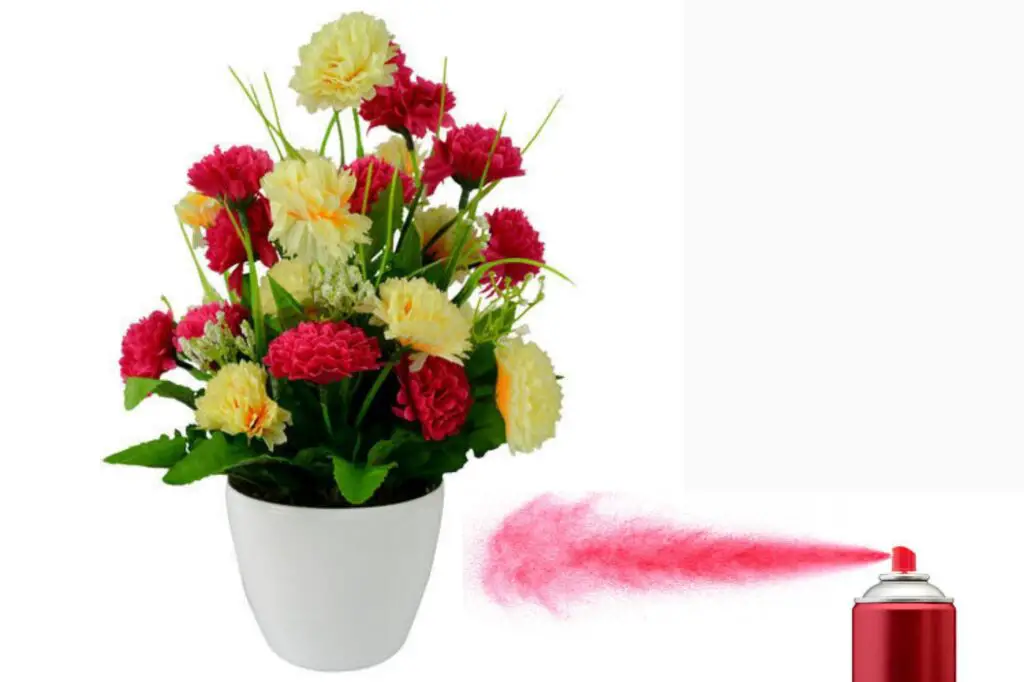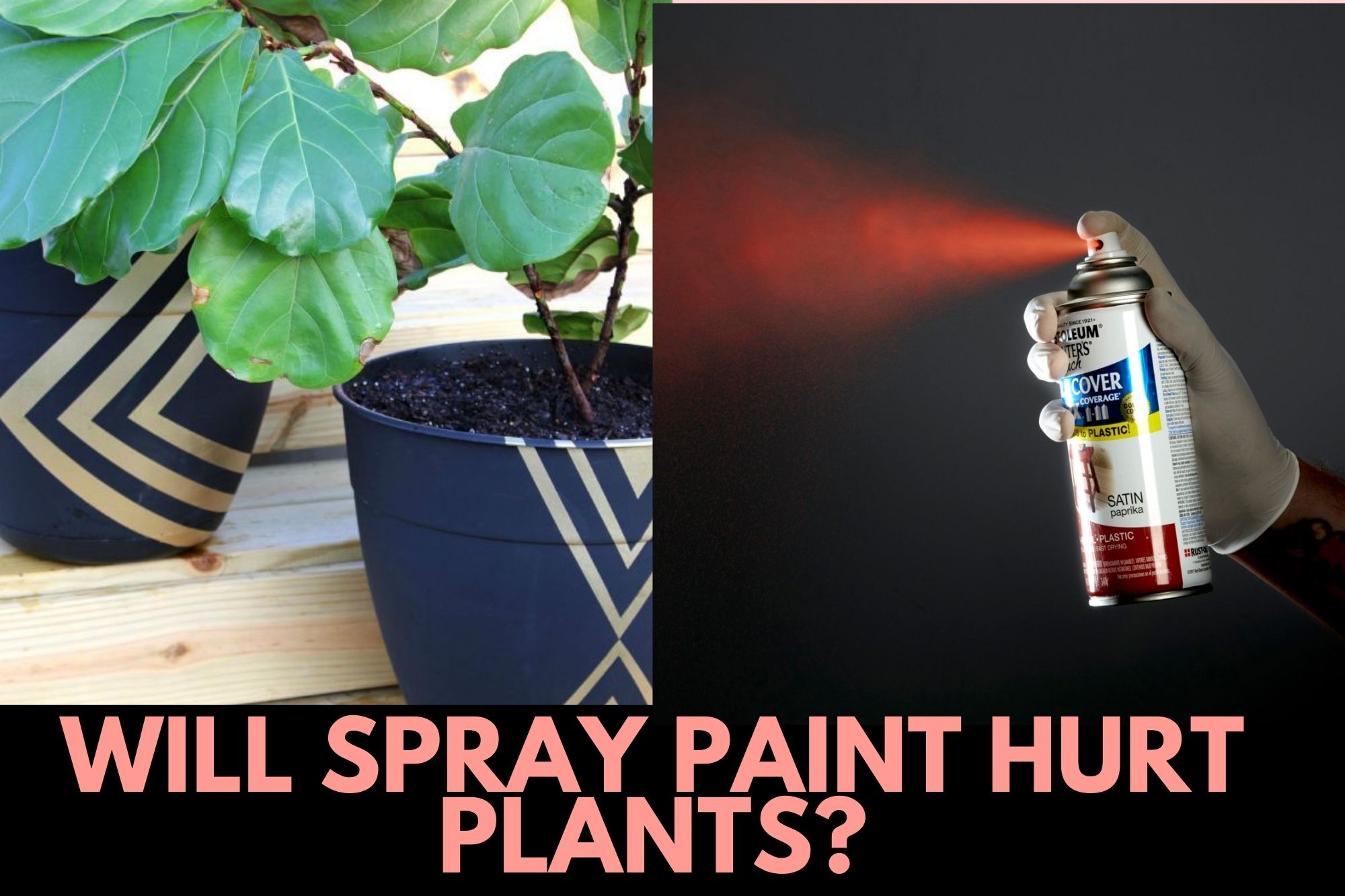Plants are major components of our environment. They are essential for a healthier environment because they take part in photosynthesis and release oxygen and give us a pleasant and healthier environment to breathe.
They control the pollution in our environment by absorbing carbon dioxide from the environment. Being a very important factor of life, they need special care. If we don’t take care of the plants, we ultimately harm our environment.
Will Spray Paint Hurt Plants?
If spray paint gets on the plant leaves and flowers, they can become very harmful to the plants.
Many people are fond of painting their plant pots, and they make their garden look more appealing actually but they should keep in mind the harmful effects.
Plant Exposure to Acrylic Spray Paints
There are several ways in which plants might become exposed to acrylic spray paints.
Indoor Painting
Indoor plants have exposure to the air around them. This implies that if you use acrylic paints indoors, especially in an unventilated space, the powerful fumes from the drying paint will most likely make their way to your plants.
Close Vicinity
If you’re painting near plants, there’s a risk that you’ll get paint on the plant itself. If your plants’ leaves get covered with dried acrylic paint, the quantity of sunlight it receive will reduce, impacting their general health. This can eventually cause that section of the leaf to die off.
From the Roots
Furthermore, dumping unwanted acrylic paint directly into the ground exposes your plant’s roots to the adjacent water-soluble acrylic paint. Though the toxicity level is modest, a concentrated amount of acrylic paint absorbed slowly by a plant might injure it.
Will Spray Paint Kill Plants?
Spray painting anything outside in a well-ventilated environment is always recommended. Before spraying, if possible, remove the plant and everything from the pot.
It will be alright as long as the spray paint does not go on the plants or flowers.

You may be wondering if you can spray paint your flower pots or other items as well. As long as you do this safely and the spray paint doesn’t go on the plants, it’s a good way to go.
Acrylic paints are also available in spray bottles which is a good alternative if you need to cover a wider area. It is advisable to use Krylon spray paints because they are very renowned and offer a large color variety.
Before spraying your flower container or vase, make sure it is clean and completely dry. If there is an area that you do not want to paint, I recommend covering it with painter€™s tape.
First, you will need a primer to spray on your pot in order for the acrylic color to stand out. After the spray paint has dried, you may spray on your desired color.
When the acrylic spray paint has completely dried, protect it with a varnish. This Krylon Spray Sealant comes highly recommended by us. From my experience, it truly safeguards your initiatives.
The sealant will function as a covering on your pots, protecting them against weather and chipping in the future.
Furthermore, when you water your plants, the paint will fall off if your pot is not properly closed, which could be harmful to your plants.
Can You Spray Fresh Flowers With Spray Paints?
They make an excellent complement to your home decor. Although, the spray paint and fresh flowers may seem like an odd combination.
It’s quite simple to accomplish, and you may customize it with your favorite colors. Spray-painted flowers are also appropriate for themed parties or gatherings.

Also, how can you keep flowers alive using spray paint? All you need is a delicate squirt of clear spray paint to protect your pressed flowers. They must be dried fully after being sprayed with paint.
I stand the stems/toothpicks in sand-filled containers. Sand-in-a-fancy-dish may also be used to make a lovely floral centerpiece!
Floral spray paint is transparent, and you may use it in a variety of ways. It’s not like conventional spray paint; it’s fine and misty.
If it dried opaque, like conventional spray paint, the flowers would die and appear all the same hue with no diversity, which would be unappealing obviously.
Floral preservative powders work as sustenance for flowers, keeping them robust and healthy when added to buckets and vases of water. Some florists use floral preservative sprays on their flowers, which can assist in keeping the blooms firm and vivid.
How to Spray Paint on Dried Leaves and Weeds?
The real fun comes when you start transforming/preserving ordinary weeds and coloring them!
Collect every dried herb and bloom that appeals to you. Some are strong, while others aren’t. Just pick them up!
Remember that dandelion-type seed pods are delicate when spray painting them. Pluck them while the stem is still green. If you go slowly and carefully, the spray paint will function as a thin mist of GLUE.
- Keep the spray paint nozzle at least 8-10 inches away from the target.
- Orient the nozzle straight at the target’s CENTER.
- Short spurts of spray Rotate the target gently while spraying over the entire area.
- DON’T OVERDO IT with the first coat. BE PATIENT and allow it to dry completely before applying a second layer.
- 3-4 coatings must be enough to keep the pods intact. Be careful to spray up the stem and onto the base of the stem where the seeds connect.
- You may use any color you choose to spray paint. White, black, red, gold, silver, purple, blue, pink, and yellow spray paints are the most commonly used.
Final Verdict
The water-based paints are almost non-toxic or least toxic to the plants and can be used on plants easily.
Spray paints can be used on plants but with certain techniques, and keep in mind that spray painting a plant that sprays paint will decrease the life of the plant or flower you are going to paint.
It is the recommendation to use dried plants and leaves if you want to spray paint. Good luck!
Beatrix Ainsley (Bea to her friends) is an abstract artist who was heavily inspired in her twenties by the abstract expressionist movement of the 1940s. Since then Bea has acquired three degrees in Science, Education and most importantly Fine Art. Her art works showcase exploring emotion and introspection of self. To achieve this – the use of bold, sweeping, intricate layers of color, and spontaneity of form is enhanced by reflecting on decades of life experiences. Bea has amassed a vast knowledge of art in all its forms, and hopes to pass it on with her contributions here.

